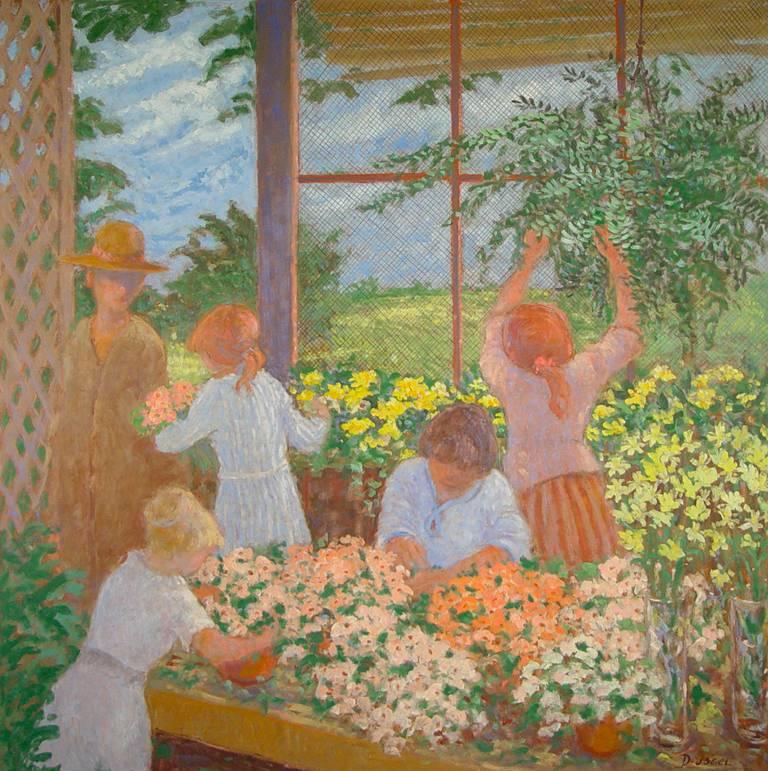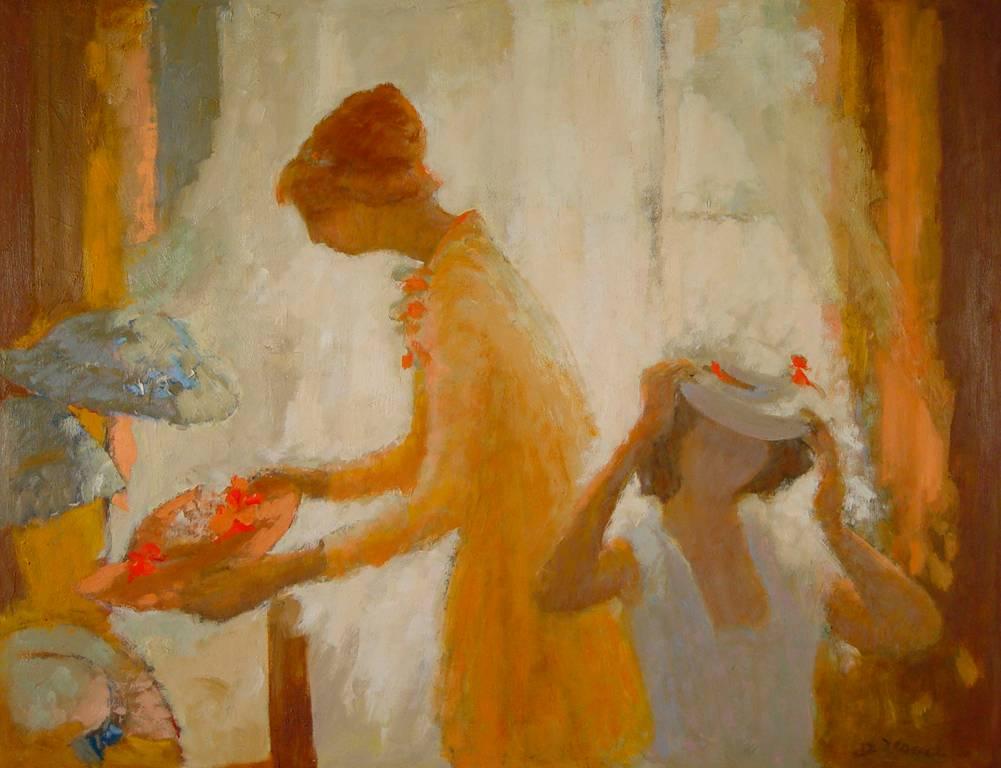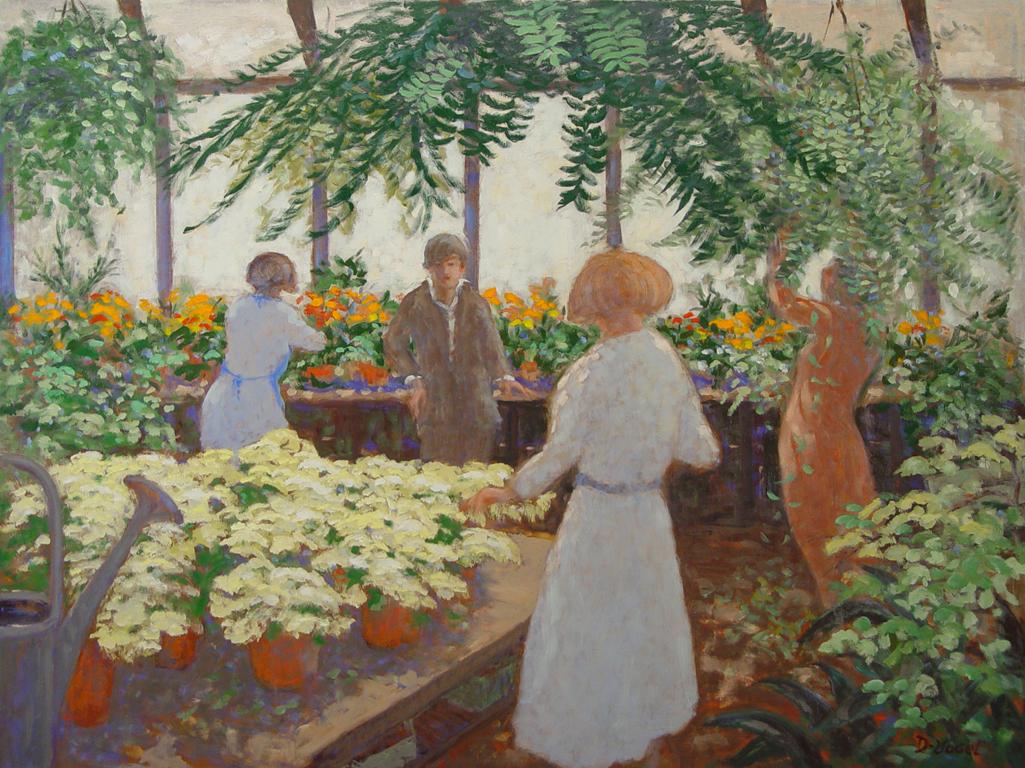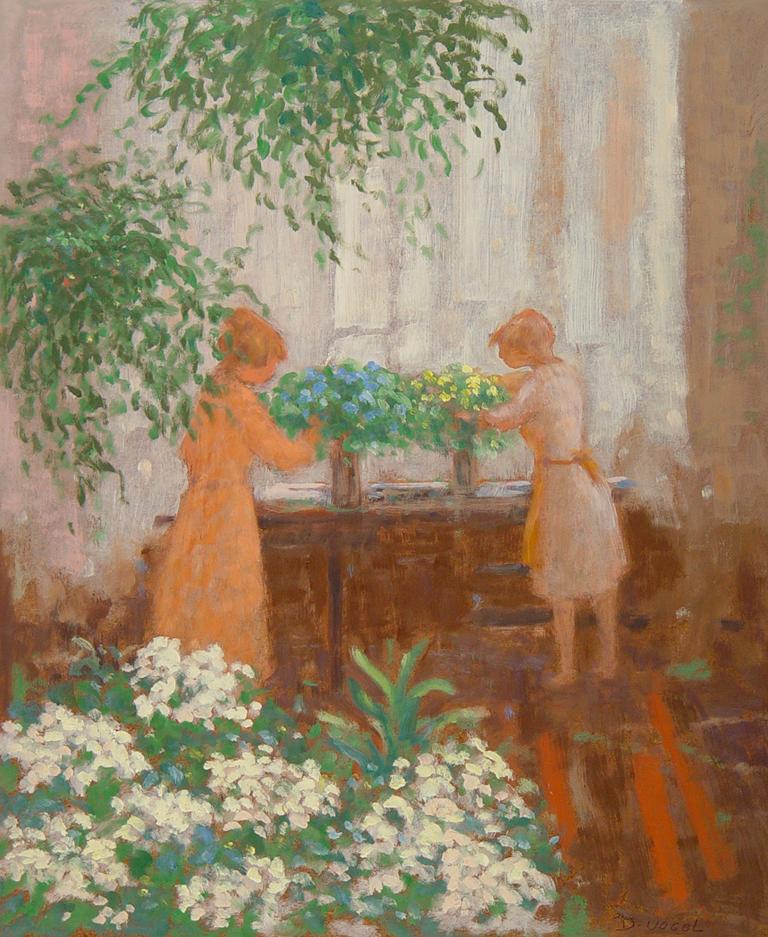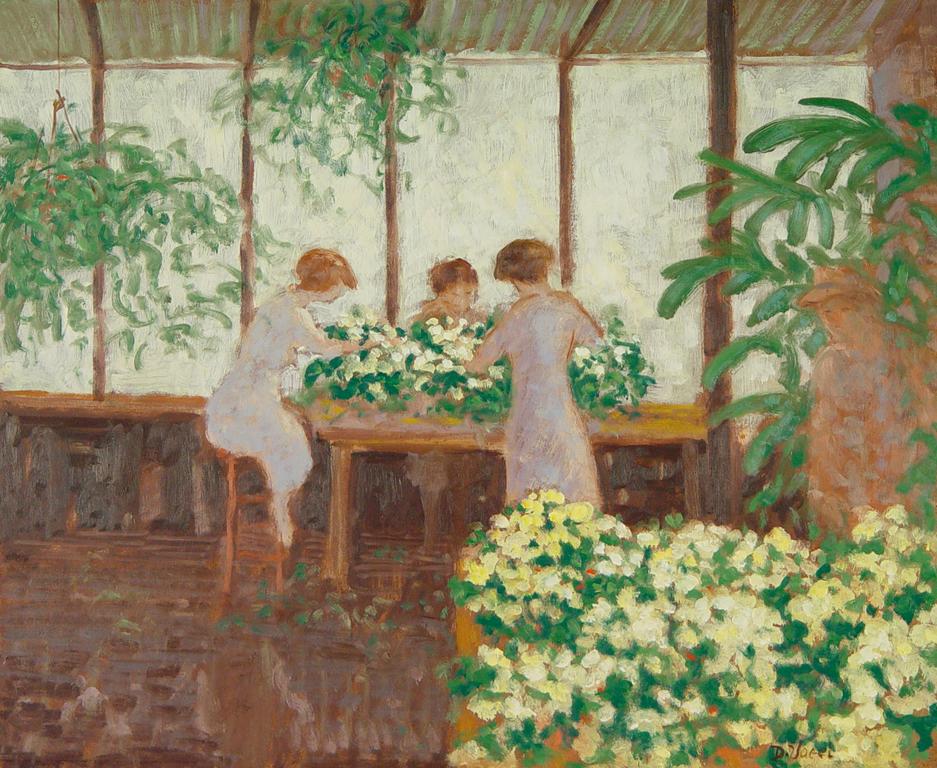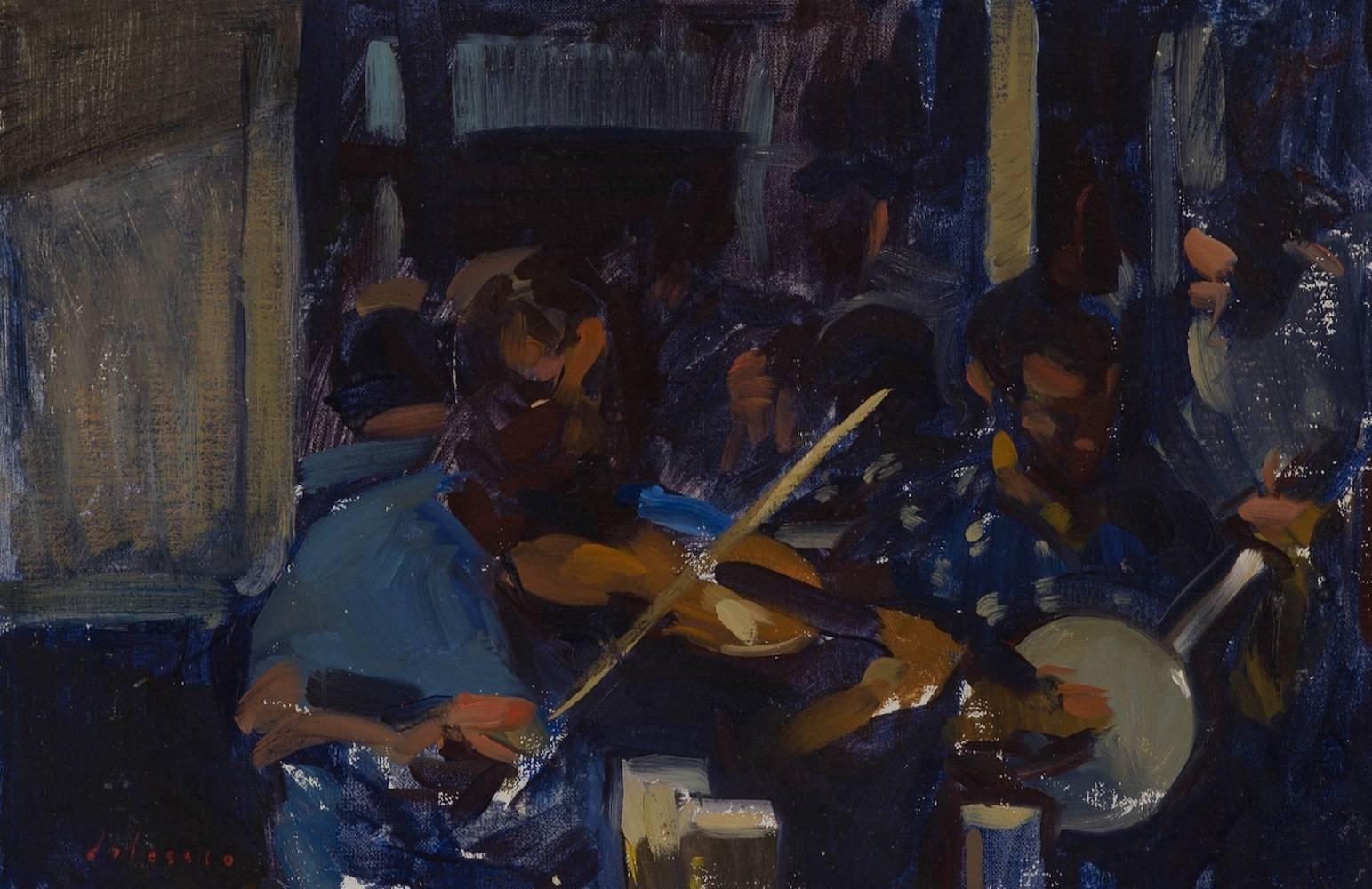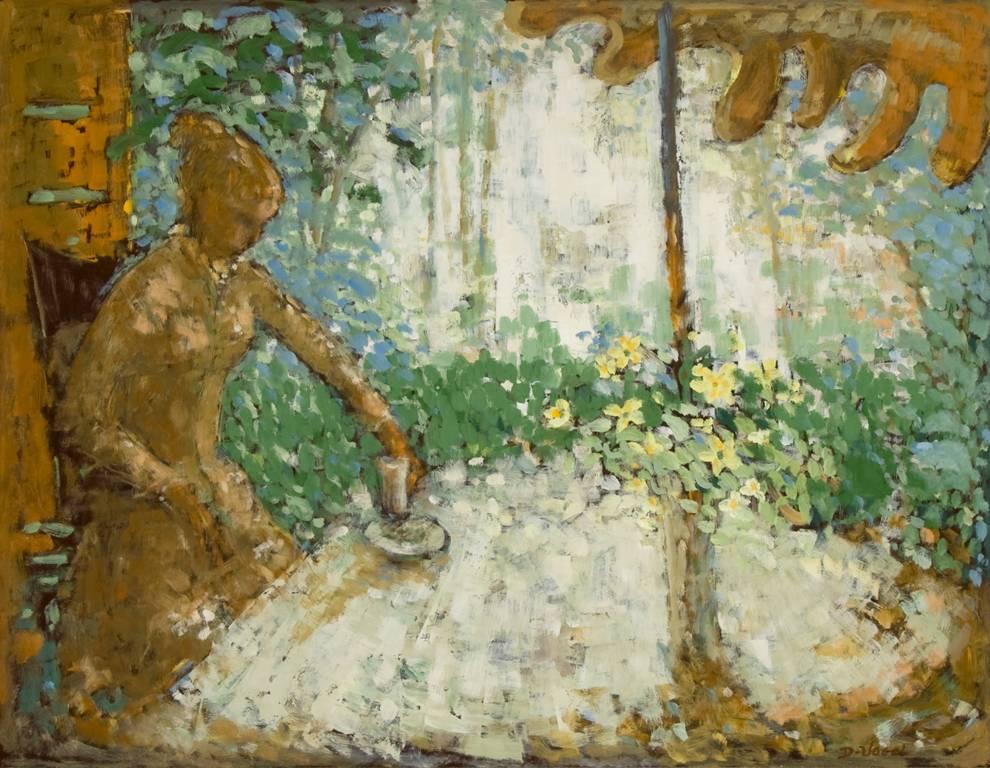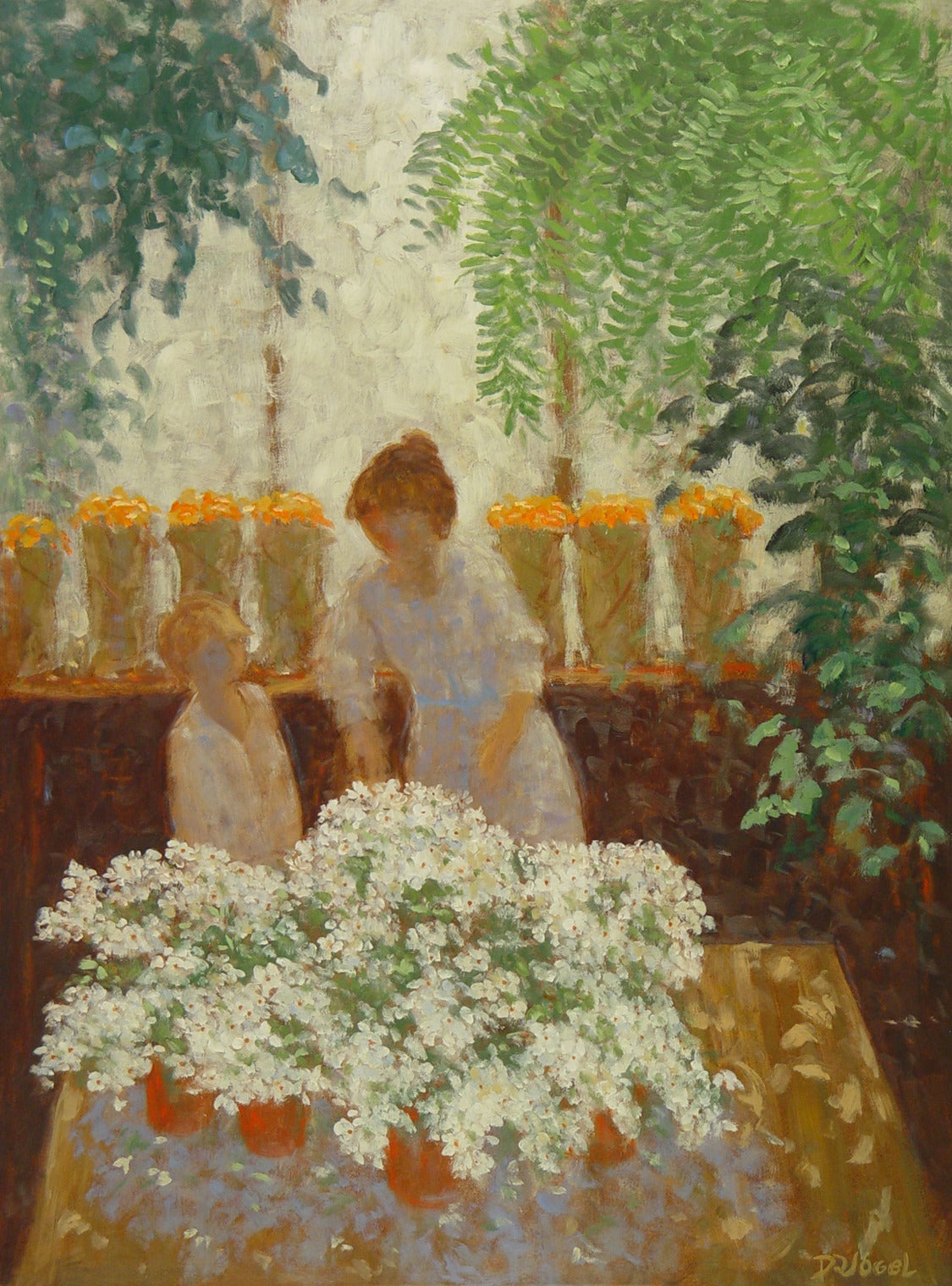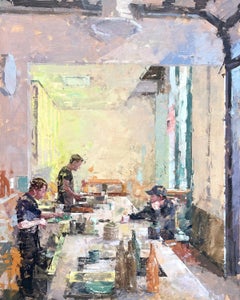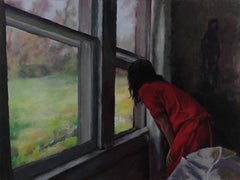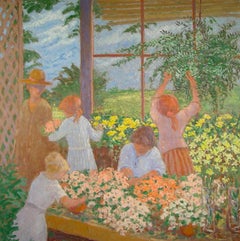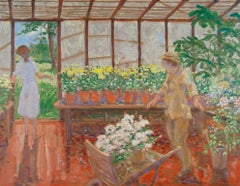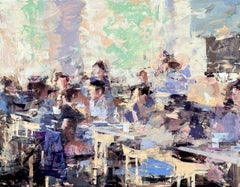
"Take In" Oil Painting
View Similar Items
Want more images or videos?
Request additional images or videos from the seller
1 of 5
Mark Andrew Bailey"Take In" Oil Painting2022
2022
About the Item
- Creator:Mark Andrew Bailey
- Creation Year:2022
- Dimensions:Height: 14 in (35.56 cm)Width: 18 in (45.72 cm)
- Medium:
- Movement & Style:
- Period:
- Condition:
- Gallery Location:Denver, CO
- Reference Number:1stDibs: LU1308210709502
About the Seller
5.0
Platinum Seller
These expertly vetted sellers are 1stDibs' most experienced sellers and are rated highest by our customers.
Established in 1990
1stDibs seller since 2019
527 sales on 1stDibs
Typical response time: 1 hour
More From This SellerView All
- "Limelight" Interior Oil Painting of BarLocated in Denver, COMark Andrew Bailey's "Limelight" is an original, handmade oil painting that depicts an impressionistic interior setting of a restaurant or dining hall. About the Artist: Artist Mar...Category
2010s Impressionist Figurative Paintings
MaterialsOil, Panel
- Light From the WindowBy Christopher Clark 1Located in Denver, COFigure standing with windowCategory
2010s American Impressionist Figurative Paintings
MaterialsOil, Wood Panel
- Spring MorningBy John McLeodLocated in Denver, CORed draped figure look out window onto landscapeCategory
2010s American Impressionist Interior Paintings
MaterialsSilver
$2,730 - "What Are You Having, " Oil PaintingLocated in Denver, COClyde Steadman's "What Are You Having" is an original, handmade oil painting that depicts the interior of a bar with a bartender at the counter.Category
2010s American Impressionist Figurative Paintings
MaterialsOil
- Leaving the HouseLocated in Denver, CONicolas Martin's "Leaving the House" is a secondary market work with one previous owner.Category
21st Century and Contemporary Figurative Paintings
MaterialsCanvas, Oil
- Cherry PieBy Louis RecchiaLocated in Denver, COLouis Recchia's "Cherry Pie" is an original, hand made mixed media painting that depicts a single slice of cherry pie in the foreground as the rest of the p...Category
21st Century and Contemporary Figurative Paintings
MaterialsMixed Media
You May Also Like
- Old Men with Kittens - Impressionist Oil, Figures in Interior by J F RaffaelliBy Jean-Francois RaffaelliLocated in Marlow, BuckinghamshireA wonderful oil on panel by French impressionist painter Jean-Francois Raffaelli depicting two old men seated in an interior. One is reading his paper as the other naps and there are several kittens on the floor. Painted in the artist's distinctive style. The work is accompanied by a certificate from Brame & Lorenceau and is included in the catalogue raisonne of the painter. Signature: Signed lower left Dimensions: Framed: 9.5"x8" Unframed: 5.5"x4" Provenance: Private collection - United States Original artists label verso Jean-François Raffaëlli's father was a failed Italian businessman and Raffaëlli himself was, among other things, a church chorister, actor and theatre singer. He then studied under Gérôme at the École des Beaux-Arts in Paris. He travelled to Italy, Spain and Algeria and on his return to France settled in Asnières. In 1876, on a trip to Brittany, he first saw the potential of realist subject matter, if treated seriously. He became involved in meetings of artists at the Café Guerbois, where the Impressionist painters used to gather. As a result, Degas, contrary to the advice of the group, introduced Raffaëlli to the Impressionist exhibitions - according to one uncertain source as early as the very first exhibition, at the home of Nadar, and certainly to those of 1880 and 1881. In 1904, Raffaëlli founded the Society for Original Colour Engraving. He first exhibited at the Salon de Paris in 1870 and continued to exhibit there until he joined the Salon des Artistes Français in 1881, where he earned a commendation in 1885, was made Chevalier of the Légion d'Honneur in 1889 and in the same year was awarded a gold medal at the Exposition Universelle. In 1906 he was made Officier of the Légion d'Honneur. He was also a member of the Société Nationale des Beaux-Arts. In 1884, a private exhibition of his work cemented his reputation. He contributed to several newspapers such as The Black Cat (Le Chat Noir) in 1885 and The French Mail (Le Courrier Français) in 1886 and 1887. He published a collection entitled Parisian Characters, which captured his favourite themes of the street, the neighbourhood and local people going about their lives. In 1880 he participated, with Forain, on the illustration of Joris Karl Huysmans' Parisian Sketches (Croquis Parisiens). He also illustrated Huysman's Works. As well as working as an illustrator, he also made etchings and coloured dry-points. His early attempts at painting were genre scenes, but once he was settled in Asnières he started to paint picturesque views of Parisian suburbs. From 1879 onwards, his subject matter drew on the lives of local people. These popular themes, which he treated with humanity and a social conscience, brought him to the attention of the social realist writers of the time such as Émile Zola. In addition to his realist style, Raffaëlli's dark palette, which ran contrary to the Impressionist aesthethic, helped to explain the opposition of those painters to his participation in their exhibitions. More concerned with drawing than colour, he used black and white for most of his paintings. Towards the end of his life, he lightened his palette, but without adopting any other principles of the Impressionist technique. After painting several portraits, including Edmond de Goncourt and Georges Clémenceau, he returned to genre painting, particularly scenes of bourgeois life. Later in his career, he painted mainly Breton-inspired sailors and views of Venice. His views of the Paris slums and the fortifications, sites which have almost completely disappeared, went some way towards establishing a genre in themselves and perpetuated the memory of the area: The Slums, Rag-and-Bone Man, Vagabond, Sandpit, In St-Denis, Area of Fortifications. His realistic and witty portrayal of typical Parisian townscapes accounts for his enduring appeal. Born in Paris, he was of Tuscan descent through his paternal grandparents. He showed an interest in music and theatre before becoming a painter in 1870. One of his landscape paintings was accepted for exhibition at the Salon in that same year. In October 1871 he began three months of study under Jean-Léon Gérôme at the École des Beaux-Arts in Paris; he had no other formal training. Raffaëlli produced primarily costume pictures until 1876, when he began to depict the people of his time—particularly peasants, workers, and ragpickers seen in the suburbs of Paris—in a realistic style. His new work was championed by influential critics such as J.-K. Huysmans, as well as by Edgar Degas. The ragpicker became for Raffaëlli a symbol of the alienation of the individual in modern society. Art historian Barbara S. Fields has written of Raffaëlli's interest in the positivist philosophy of Hippolyte-Adolphe Taine, which led him to articulate a theory of realism that he christened caractérisme. He hoped to set himself apart from those unthinking, so-called realist artists whose art provided the viewer with only a literal depiction of nature. His careful observation of man in his milieu paralleled the anti-aesthetic, anti-romantic approach of the literary Naturalists, such as Zola and Huysmans. Degas invited Raffaëlli to participate in the Impressionist exhibitions of 1880 and 1881, an action that bitterly divided the group; not only was Raffaëlli not an Impressionist, but he threatened to dominate the 1880 exhibition with his outsized display of 37 works. Monet, resentful of Degas's insistence on expanding the Impressionist exhibitions by including several realists, chose not to exhibit, complaining, "The little chapel has become a commonplace school which opens its doors to the first dauber to come along."An example of Raffaëlli's work from this period is Les buveurs d'absinthe (1881, in the California Palace of Legion of Honor Art Museum in San Francisco). Originally titled Les déclassés, the painting was widely praised at the 1881 exhibit. After winning the Légion d'honneur in 1889, Raffaëlli shifted his attention from the suburbs of Paris to city itself, and the street scenes that resulted were well received by the public and the critics. He made a number of sculptures, but these are known today only through photographs.[2] His work was also part of the painting event in the art competition at the 1912 Summer Olympics. In the later years of his life, he concentrated on color printmaking. Raffaëlli died in Paris on February 11, 1924 Museum and Gallery Holdings: Béziers: Peasants Going to Town Bordeaux: Bohemians at a Café Boston: Notre-Dame; Return from the Market Brussels: Chevet of Notre-Dame; pastel Bucharest (Muz. National de Arta al României): Market at Antibes; Pied-à-terre Copenhagen: Fishermen on the Beach Douai: Return from the Market; Blacksmiths Liège: Absinthe Drinker...Category
1890s Impressionist Figurative Paintings
MaterialsPanel, Oil
- Flower ShedBy Donald S. VogelLocated in Dallas, TXThe greenhouse became a favorite subject of Donald Vogel's in the 1980's. As Vogel reflected in the 1998 catalogue published for his traveling retrospective exhibition, "The greenhou...Category
Late 20th Century American Impressionist Figurative Paintings
MaterialsOil, Panel
- Storage ShedBy Donald S. VogelLocated in Dallas, TXThe greenhouse became a favorite subject of Donald Vogel's in the 1980's. As Vogel reflected in the 1998 catalogue published for his traveling retrospective exhibition, "The greenhou...Category
Late 20th Century American Impressionist Figurative Paintings
MaterialsPanel, Oil
- The Hat ShopBy Donald S. VogelLocated in Dallas, TXDonald Vogel’s paintings reflect his interest in seeking beauty in life and in sharing pleasure with his viewers. Vogel entreats us to "rejoice and celebrate each new day, knowing it...Category
1970s American Impressionist Figurative Paintings
MaterialsPanel, Oil
- Greenhouse ShadowsBy Donald S. VogelLocated in Dallas, TXDonald Vogel’s paintings reflect his interest in seeking beauty in life and in sharing pleasure with his viewers. Vogel entreats us to "rejoice and celebrate each new day, knowing it...Category
1990s American Impressionist Figurative Paintings
MaterialsPanel, Oil
- Greenhouse YellowsBy Donald S. VogelLocated in Dallas, TXDonald Vogel’s paintings reflect his interest in seeking beauty in life and in sharing pleasure with his viewers. Vogel entreats us to "rejoice and celebrate each new day, knowing it...Category
Late 20th Century American Impressionist Figurative Paintings
MaterialsPanel, Oil
Recently Viewed
View AllMore Ways To Browse
Take That
Painting Of Dining
San Francisco City Painting
Southwest Oil Painting
Restaurant Painting
Connoisseur Fine Art
Dining Scene Painting
Southwest Scenes
Restaurant Scene
Restaurant Scene Paintings
San Francisco Cityscape Paintings
Restaurant Scenes Oil Paintings
American Oil Art Restaurant
Oil Painting Dining Scene
Impressionist Dining Art
Bailey Oil Paintings
Impressionist Dining Scene
Mark Andrew Bailey

